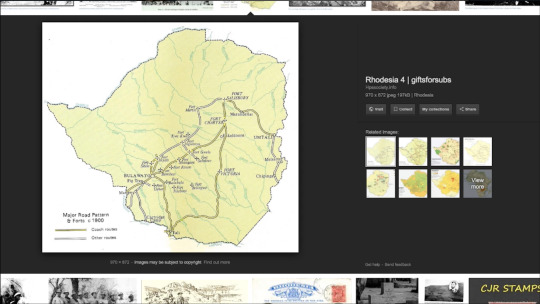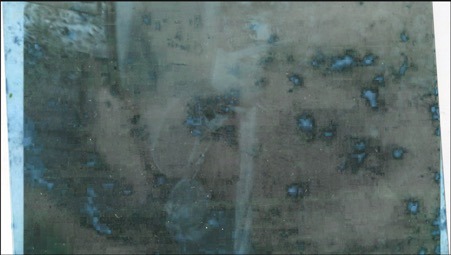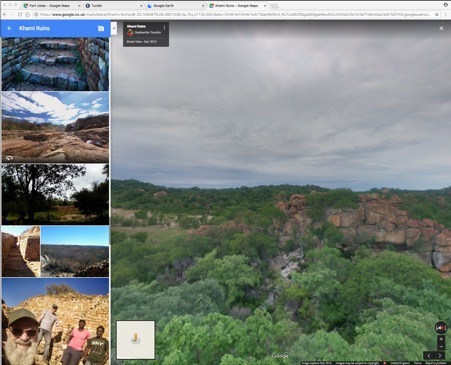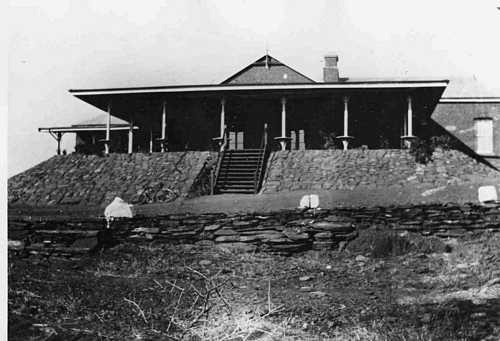Text
REFLECTION ON FINAL PIECES

I will likely re-record my sound and re-upload it to vimeo with my video, as I can hear minor errors, thumps, crackles (that aren’t forced glitches) in the recording. And also my tone of voice could be better and more consistent. That said, using your own voice for a voiceover is always going to lead you to over analyse yourself, whereas it might be less obvious to others. I was also pushed for time given I adjusted the script quite late on. Nevertheless I feel my poetic use of language has been bettered through every draft I made. It proved difficult at first to let go of rhymes, but I found having only a few meant they achieved more impact in places and also the rhythm eventually fell into the use of rhyming couplets at the end of each paragraph - concluding them nicely.
As for the visuals in the video, the timing and quality has vastly improved this term, which I was proud of. One moment where I chroma keyed and glitched a slowly panning map of Bulawayo over the photographs of dams, Borrow Street swimming baths, the Matopos Hotel, etc, was something I found quite visually interesting - I wish I had experimented with this idea more, but I also wanted to maintain this balance between focusing on the script and the visuals.

I invested a lot of time into the production of the video, so the photographs in Peter Scott didn’t feel like they were up to the same standard of work. Then again I liked the process behind these and I think the statement next to the pieces, (the last paragraph taken from my script), really contextualises their purpose. I don’t feel they are as visually pleasing as glitch pieces I have created before but this is likely a personal preference, as I prefer the aesthetic of the glicthes I have created previously. However what is wonderful about the glitch is how it comes in so many different forms - these panoramic glitches demonstrate the computer trying to read and put together two separate time periods, corrupting to create half painted pictures through this confusion of it being same space. The computer’s glitch is my journey. This misshapen mashing together of time periods and uncomfortable discoveries. The picture shouldn’t be rotated, because the computer, like myself, disrupted the image and turned it on its head.
0 notes
Text
ICEBERGED
This was a word I decided to invent for how I describe the photographs from the stranger’s photo album towards the end of my piece. I think it sums up what I found perfectly in terms of imagery - we see 10% of an iceberg above water and the other 90% is submerged underneath. This idea can loosely be applied to any photograph, how a picture will never capture an entire story. But there is something about a sense of secrecy that ties the iceberg to old photographs. The way it hides, dormant, waiting to be discovered. Once it has been found you become filled with a sense of dread, you wish you could pretend it’s still only the tiny top layer you’ve seen.
0 notes
Text
FORT USHER ON SECOND SCREEN:


Googling Fort Usher brings up all these images and pieces of history connected to the place - yet the Google maps shows a blank space with only the name left which has “scarred the land”. I think I should play these two moments side by side, as it demonstrates how the internet keeps a database of the old and new. In a way it contextualises the images rather than just having them as aesthetic images.
0 notes
Photo



SECOND VIDEO:
This one won’t be as complex as the first video - here are some of the images I have chroma keyed in the beginning using negatives and blank negatives, in order to build this secrecy of the memories of unknown eras that I used to gaze upon when I was younger, the undeveloped and hidden aspects of the photographs should mirror the inability for me to grasp a connection to them, even though they exist to me as connections in the family. I think the negatives really add to this in an eerie way.
0 notes
Audio
Areas of my audio I have panned and edited so that they glitch slightly - it is mainly heard in the parts where the two time periods interact/like two technologies that aren’t compatible with one another.
When I did a test run with the headphones the ones attached to the left hand screen accidentally had an echoed effect. I thought it was an accidental effect on the audio track, but when testing out the sound on other devices there was no echo, so it was a problem with the headphones. I went to replace the headphones, but reflecting on this I realised it was interesting how both screens mirror the old and the new and the screen that had the echo was the screen that displayed predominantly these old images, so the echo almost added to this idea of glorifying things we consider vintage.
I then decided to see how it would sound having the voiceover on the right, (predominantly the digital journey), as flat and glitchy, whereas this other one lighter and echoed. This should subtly add to the experience the viewer takes away from the film, also it could spark a discussion between them to which they differentiate their opinions depending on which headphones they have picked up.
I think this also works because no one is essentially hearing a different story, just the way it is told is altered, which mirrors the way nostalgia sugar coats old images that may secretly be more problematic than they appear. But our associations to old things being rich with history clouds our judgement. Therefore we could see an old image in our hands, or the exact same image online, except the one online has all of its data and information connected to it and the old photograph leaves you to guess.
0 notes
Text
QUESTION SENT TO FORENSIC ARCHITECTURE AFTER TALK:
Q: I recently attended the Eyal Weizman's Forensic Aesthetics Lecture in Liverpool and was hoping to ask a question but unfortunately ran out of time. What captured me about the lecture was the moment Weizman was discussing how a reconstruction was built through a sense of space using memories/sound from five survivors of Saydnaya Prison. Weizman mentioned that there are a particular techniques employed to differentiate false memory from real memory. I wanted to know how exactly you can extract the truth from peoples' recollections when memory is so complex it can become misconstrued so that the person reciting it can come to believe it is the truth themselves? Is it the case of matching it up with other peoples' accounts or is there a certain procedure in filtering out inaccuracies?
A: The way we distinguish between accurate and skewed memories is through cross referencing and corroborating with other pieces of evidence. For example, Eyal might have mentioned the case of the witness who remembered the corridor where he was tortured to be circular. This was easy to identify as a memory error because we were able to locate his cell and the corridor within the building, based on other clues, and then compared the architecture of the building as it appears on the satellite image to what he described. We always rely on multiple sources and techniques to verify our results.
The satellite image: which is essentially how we view Google Maps, in a sense creates another piece of information that disproves someone’s own recollection - but once an image from Google becomes outdated, it too lingers on like a false memory. Therefore do old images by default become false memories of a place, as they no longer mirror a truth or the reality of that space. Therefore do all images have expiration dates and is this why the vintage photos I have looked at within my work seem to become even more distanced from our understanding of ‘now’.
0 notes
Text
DIGITAL SCREEN VIDEO COMPLETE
It’s very rich with movement this screen, so maybe keep the other screen more still by just displaying mainly the old photographs and occasionally videos when the other screen is black.
Things to consider: 1. (Possibly) Transfer the clips of reaching the summit of Orrest Head onto the other screen? Or should it not matter too much that the old/new have started to merge.
2. Make notes of times of each clip and also opening black screen, so that other video is in time.
3. Re-record the two sentences that aren’t pronounced well enough “I began to look” not “abegantoluk”. Apply noise removal and amplify to same volume as rest of the recording.
4. BUY MEM STICK. Running out of space on these two and when videos are rendered they’re gonna take up even more space! Maybe borrow spare as well in case.
0 notes
Photo

Last image on digital screen: “i wonder how long that photo will last?”
As it pans on the shadow of the panorama taker. The person I have always been as the narrator - the outsider of the images.
I was going to use the image I had of the American family, but never had a chance to explain and ask them if I could use an image of them in my film, so it might be best not to use an image of them, but let the script paint the image.
0 notes
Video
whilst one screen shows the picture, the other screen can show me Googling it, also shows my search history and what I was previously looking at - which is quite a personal space in a way.
0 notes
Photo

Paragraph where I overview our romantacised view of old photos - before the anecdote about Orrest Head, I was feeling a bit lost about what to have on the digital screen - then had idea to scroll through peoples’ uploaded pics to Google Earth of Zimbabwe and edit in some of the old images in between clicks - this panning between now and then.
0 notes
Video
“I found where the Fort had stood, where its name scarred the land.”
This imagery is interesting, as it shows how some places have kept their names since being colonised, even when there’s nothing there. This reminds me of how memories linger without lack of physical existence, resulting in the memory becoming misconstrued.
0 notes
Video
Speak to Jen about wording of this, is it insensitive for such an important part of the video - it is just a turn of phrase though, so might be okay?
0 notes
Video
Possibly use this instead of the lengthy email bit, or both??
VISUAL TEST: Looks better with just this email, also interesting to see the images sent by Colin Jennings clicked on, it brings the viewer on this journey I am undergoing through my computer. And his phrasing “funny, I’m sure there was.......”, attempting to collect a memory of Rhodesia from his mind, works better than the email I used last term, which was more robotic.
0 notes
Text
...

The website I found the pictures of Borrow Street Swimming Pool on has been taken down, I guess it demonstrates images retrieved from the internet are easily lost, I’m not sure I even saved the picture I wanted anywhere, it only exists buried in the videos I used it in, it’s no longer its own jpeg... strange.

I’m not sure I can use it in my video now, might have to find another one, which is a shame because this specific image^^^^^ is the one that had the remaining pillars left in both the old photograph and the digital image.
ALSO:
From looking on Mags Kriel’s website again I found this,
“I saw this photo of the Old Matopos Hotel, I assume they must have been taken it in the early 1900's. About 5 years ago (2003) when we were up there, all what was left - were the foundations, the locals had destroyed every thing, such a waste, not only was it of great historic value, but I recall in the bar there were excellent sketches of World War II army and Air force badges." - Vernon Roberts (tried to email but uses onebox.com which is not accessible from this region).

I wanted to see if he had any pictures of it now, just as the foundations of a building left over, but in trying to contact him discovered the barriers of internet as a tool, knowing I am so close to ask him, but in a position where I cannot use a certain site as its unobtainable from GB.
The disappearance of the website link and unreachable email felt like dead ends as much as the inability to access memories through the photos alone.
0 notes
Photo

DIGITAL SCREEN:
Part of script: “Even though I was looking at pictures of relatives, ones I once knew, some still alive”.
Could flash from in between the most recent picture of my Nan, June 9th and then the pictures of her (scan in) from the old photographs I found. Shows that she has lived through this development era of photography.
Use Grandad as image for “ones I once knew” as he is a key figure in this and it shows how he is no longer around to recite these unobtainable memories.
------Unfortunately since re-recording this is slightly out of sync now, but the relation to Facebook images being the new form of digital image is still there, so it doesn’t matter that its not the exact same time as the script.
0 notes
